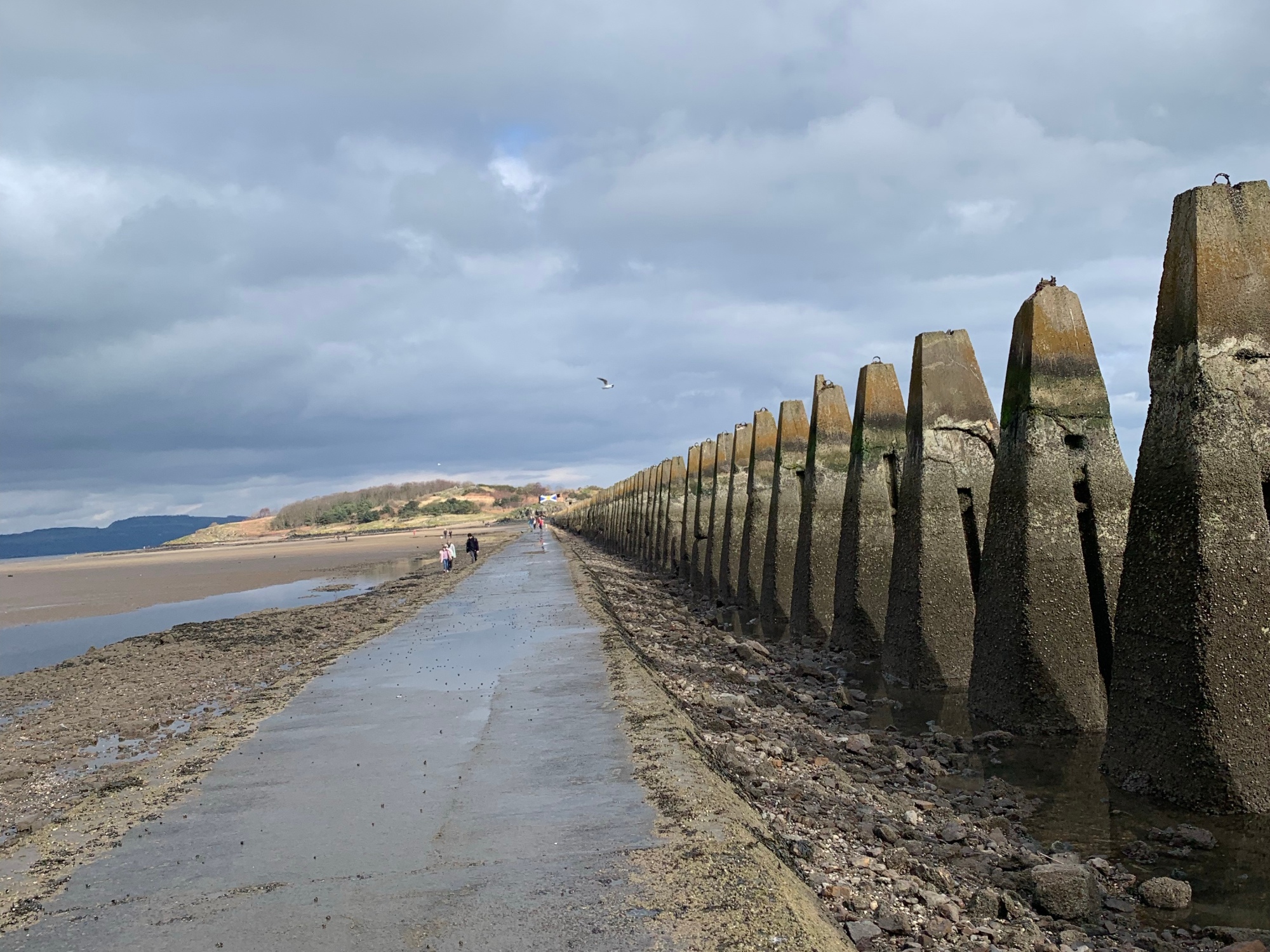Walking the causeway across the Forth to Cramond Island is a unique experience. It’s been ages since we last did this walk because the tide times haven’t quite lined up with other plans. But on three day, the tide times worked, and the weather was pretty good, so we were good to go. It is so important to check the tide times carefully before venturing across. There is usually around a three-hour safe crossing window. You don’t want to become the next person the RNLI has to come and rescue from the island!
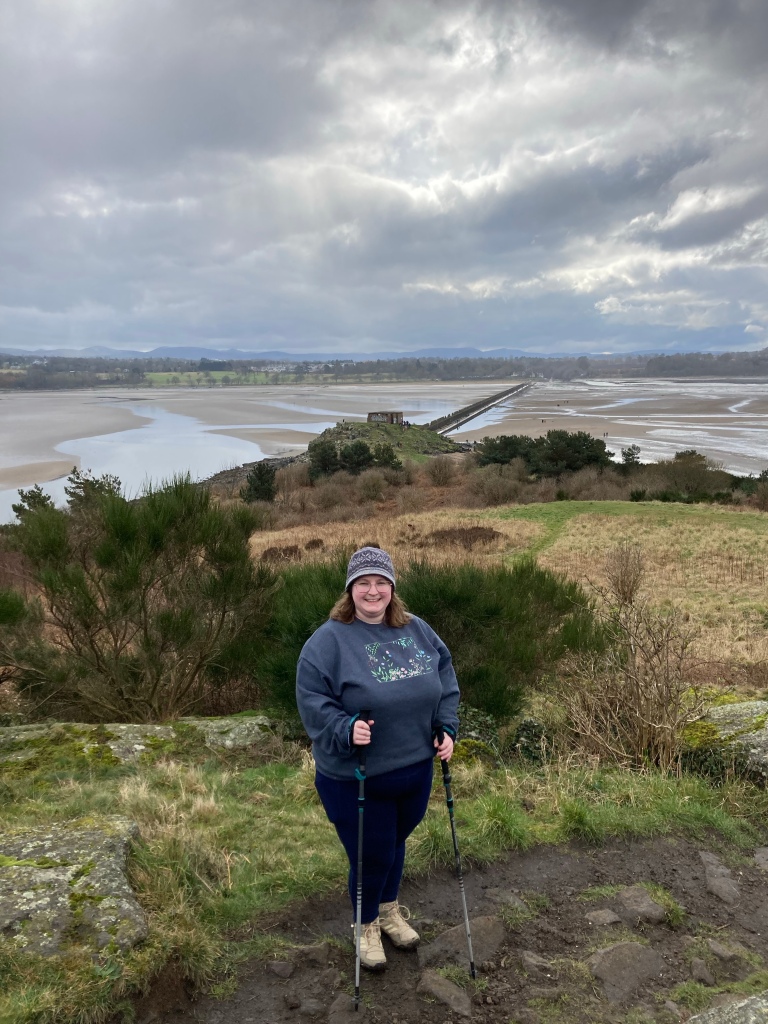
History
The small tidal island is located in the Firth of Forth, near Edinburgh and has a rich history that dates back thousands of years. The island has been inhabited since prehistoric times, with evidence of human activity dating back to the Mesolithic period. The remains of ancient settlements and artifacts have been discovered on the island, providing insights into the lives of early inhabitants.
During the Roman period, Cramond Island was an important strategic location. The Romans built a fort on the island, known as Alaterva, which served as a base for their military campaigns in northern Britain. Then in the medieval period, Cramond Island was home to a small fishing community. The island provided a safe harbor for fishing boats and was a source of livelihood for the local residents. The ruins of a medieval chapel, dedicated to St. Columba, can still be seen on the island, apparently anyway, I must admit to never having seen them myself.
The most obvious historical remains on the island by far though stem from World War II. Cramond Island in Edinburgh played a crucial role in the anticipated defense of the city and its surrounding areas. The island was fortified with various defensive structures to protect Edinburgh from potential enemy attacks. Gun emplacements, anti-aircraft batteries, and searchlight stations were strategically placed on the island to provide effective coastal defense. These defenses helped safeguard the city and its important military and industrial targets from aerial and naval threats.
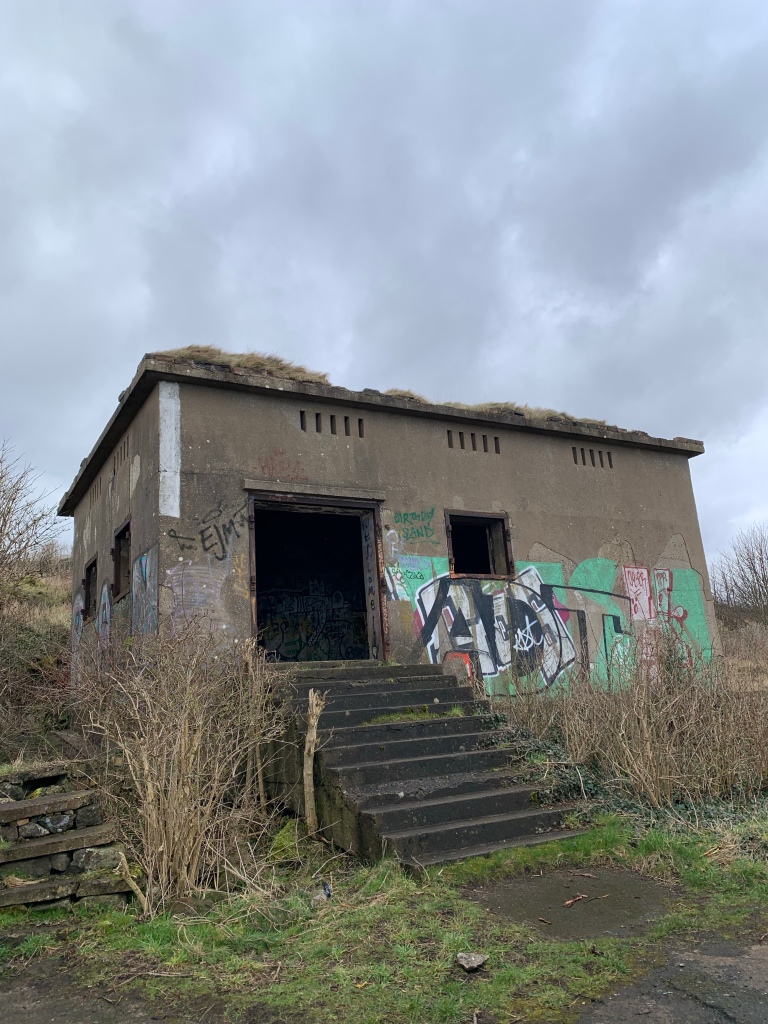
Cramond Island’s anti-aircraft batteries played a vital role in defending against enemy aircraft. These batteries consisted of anti-aircraft guns that could shoot down enemy planes or deter them from approaching the city. The presence of these batteries on the island helped protect Edinburgh’s airspace and disrupted potential bombing raids or reconnaissance missions.
Searchlight stations were also installed on Cramond Island to illuminate the night sky and detect enemy aircraft. These searchlights played a crucial role in tracking and targeting enemy planes, making it difficult for them to carry out attacks or gather intelligence in the area. By providing enhanced visibility, the searchlights on Cramond Island contributed to the overall air defense system of Edinburgh.
The elevated position of Cramond Island provided an excellent vantage point for observation and communication. Military personnel stationed on the island could monitor the movement of ships and aircraft in the Forth Estuary and relay important information to the mainland. This observation and communication network helped coordinate defense efforts and respond effectively to potential threats.
Cramond Island served as a training ground for military personnel during the war. Soldiers and defense personnel underwent training exercises on the island to prepare for combat situations. Additionally, the island served as a base for coordinating naval operations and conducting patrols in the surrounding waters.
Today, remnants of the wartime structures can still be seen on Cramond Island, serving as a reminder of its significant place in Edinburghs War history.
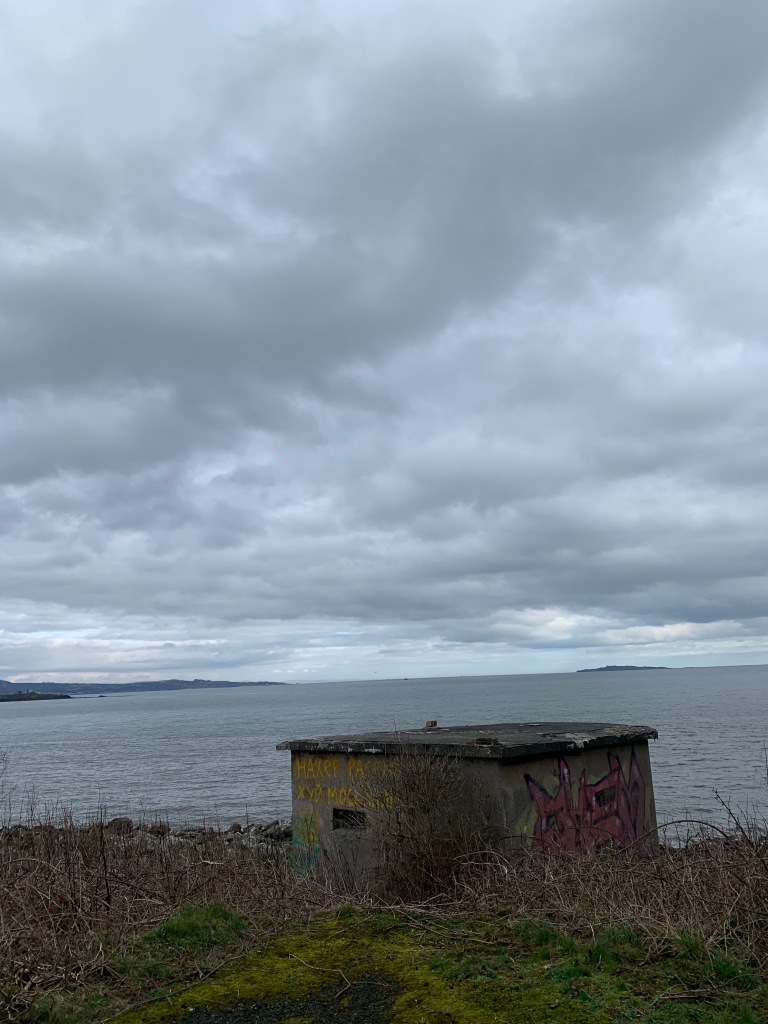
Visiting the island
To get to Cramond Island from central Edinburgh, you have a few options for both car and public transport:
1. Car: If you prefer to drive, you can follow these directions:
– Take the A90 road heading west from central Edinburgh.
– Continue on the A90 until you reach the Barnton Junction.
– At the Barnton Junction, take the exit onto Whitehouse Road (A902).
– Follow Whitehouse Road until you reach the village of Cramond.
– There are parking spaces available in Cramond, near the promenade, where you can leave your car and proceed on foot to the island. However it can get quite busy on days where the tide times line up well with a nice day.
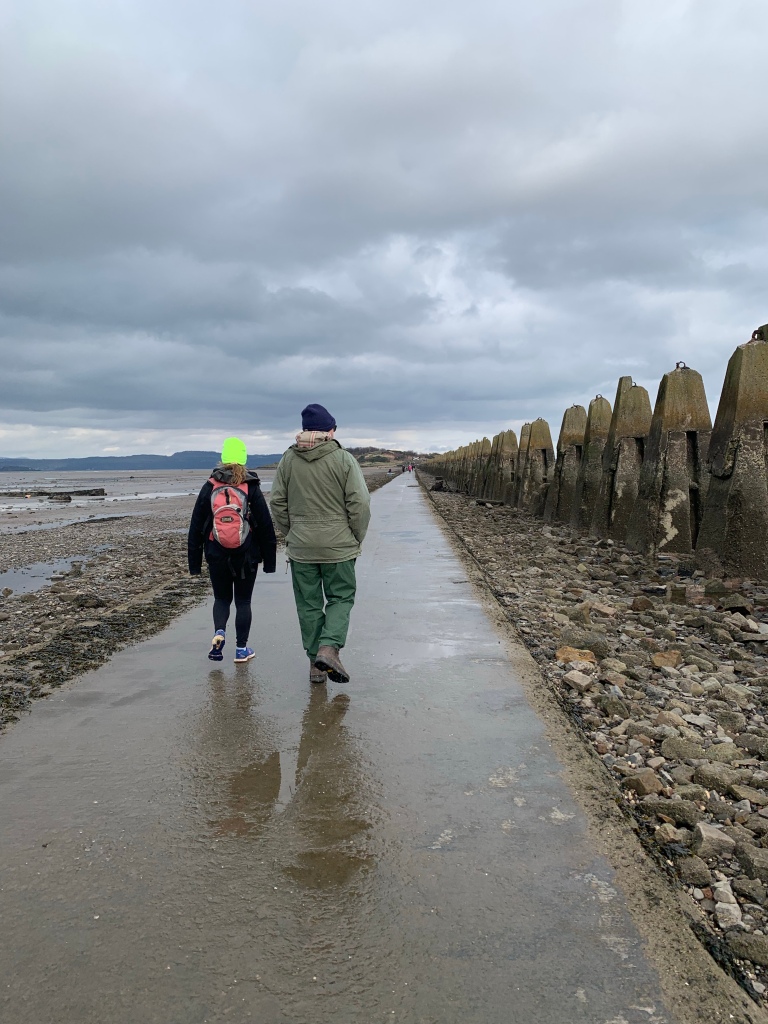
2. Bus: You can also take a bus from central Edinburgh to Cramond. The Lothian Buses service number 41 operates between Edinburgh city center and Cramond.
– You can catch the number 41 bus from various stops in the city center, such as Princes Street or St. Andrew Square.
– Check the Lothian Buses website or use a public transport app to find the most convenient bus stop and the schedule for the number 41 bus.
– Get off the bus at the Cramond Village bus stop, which is located near the promenade.
– From there, you can walk to the causeway and access Cramond Island.
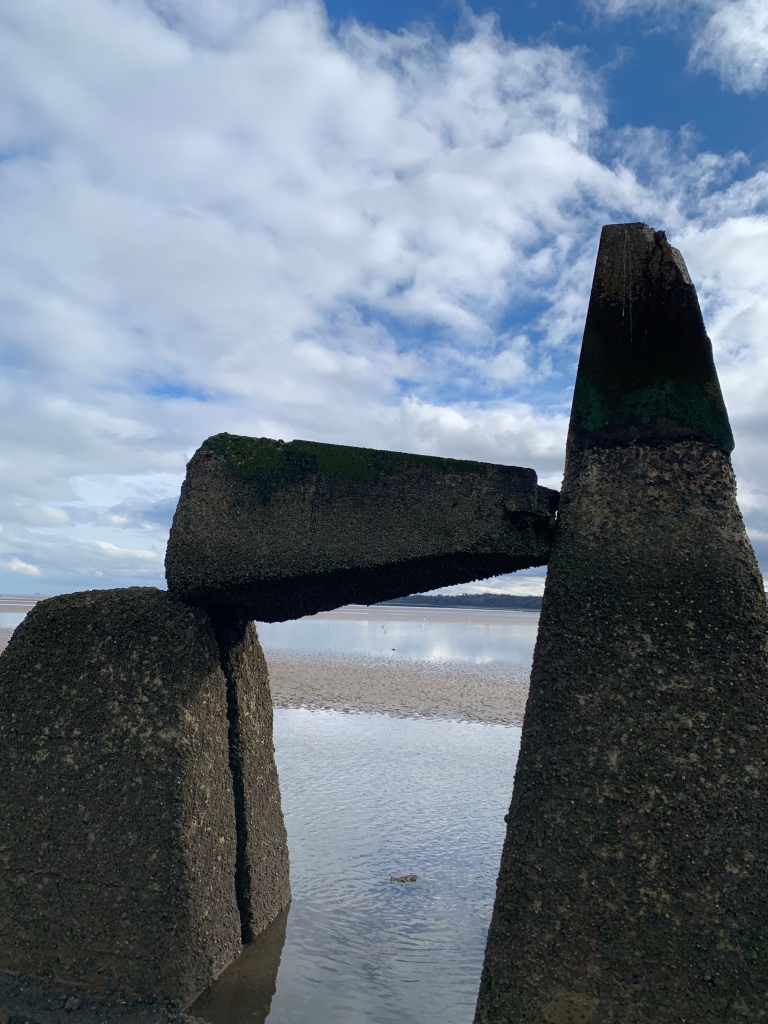
You can access Cramond Island by walking across a causeway during low tide. The causeway is a natural pathway that is exposed when the tide is low, allowing people to walk from the mainland to the island. It is important to check the tide times before visiting, as the causeway becomes submerged and impassable during high tide. It is crucial to be aware of the tide times and plan the visit accordingly to ensure a safe and enjoyable experience. The tide times can be obtained from online tide tables or by reading the sign at the start of the causeway itself.

You should also be mindful of the changing weather conditions (it is Scotland after all!) and dress appropriately for walking on the causeway and exploring the island. I do recommended to wear sturdy footwear. Due to constantly being covered by the sea the causeway itself can be pretty slippery even on a bright and dry day. You don’t want your nice walk disrupted by falling over. The path around the highland is also slightly more ‘path like’ in some areas than others. If you want to do a complete circuit be prepared for a bit of scrambling.
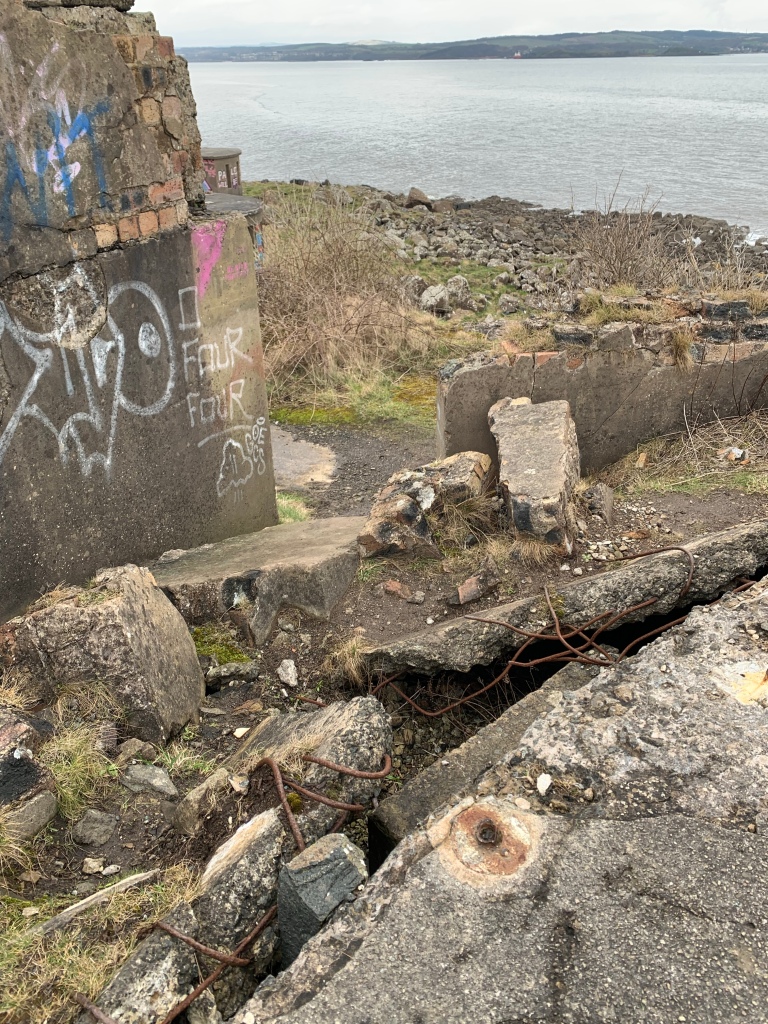
Overall if you find yourself in Edinburgh and the tide times work I would highly recommend a visit. It’s such a unique thing to do. There is just something magic about heading out to adventure in a place that can only be accessed at certain times of day. It’s also a reminder of Edinburghs history and the important role the Island has played in that.

